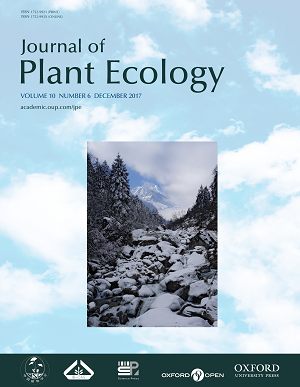Current Issue
-
 Volume 10 Issue 6
Volume 10 Issue 6
The view near the experiment site: the Gongga Mountains (29°20′–30°20′N, 101°30′–102°15′E, 7556 m a.s.l.), which is located in the southeastern fringe of the Tibetan Plateau in China. The picture was taken on 19 December 2014, when conducting the stem CO2 efflux rate measurement. Photo was taken by Guang Zhao. See Zhao et al. 1001–1011.
IF: 3.9
CiteScore: 5.7
CiteScore: 5.7
Editors-in-Chief
Yuanhe Yang
Bernhard Schmid
Yuanhe Yang
Bernhard Schmid
CN 10-1172/Q
ISSN 1752-9921(print)
ISSN 1752-993X(online)
ISSN 1752-9921(print)
ISSN 1752-993X(online)







